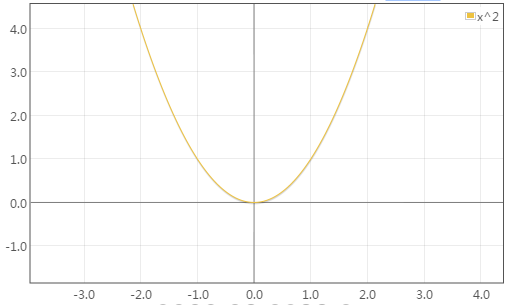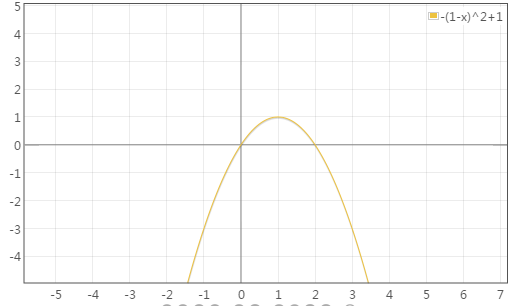Android属性动画中的Interpolator
本文部分图片转自:https://blog.csdn.net/lgaojiantong/article/details/39451243
目录
- 自定义插值器
- 系统插值器
1. 自定义插值器
要自定义插值器,首先得看看系统的插值器是怎么写的。这里从最简单的LinearInterpolator入手,查看其继承关系:
public class LinearInterpolator extends BaseInterpolator implements NativeInterpolatorFactory {
public LinearInterpolator() {
}
public LinearInterpolator(Context context, AttributeSet attrs) {
}
public float getInterpolation(float input) {
return input;
}
/** @hide */
@Override
public long createNativeInterpolator() {
return NativeInterpolatorFactoryHelper.createLinearInterpolator();
}
}
可以看到,LinearInterpolator继承自BaseInterpolator。一路往上,发现BaseInterpolator实现了Interpolator接口,而Interpolator则继承于TimeInterpolator。终于到了源头,现在来看看TimeInterpolator的源码:
public interface TimeInterpolator {
float getInterpolation(float input);
}
TimeInterpolator的代码特别简单,只有一个getInterpolation()方法,这就是插值器的核心所在。参数input代表动画的进度,范围是从0到1.0,当input为1.0时,则动画结束。需要注意的是,我们定义的任何值,都不会对此参数造成影响。而getInterpolation()的返回值,则是我们所需要的插值,范围也是从0到1.0,但根据需要可以返回小于0或大于1.0的数值,分别表示起点往回以及超出终点(用英文中的undershoot和overshoot可能更方便理解)。
理解了上述内容后,现在来写一个简单的自定义Interpolator:
public class MyInterpolator implements TimeInterpolator {
@Override
public float getInterpolation(float input) {
return 1-input;
}
}
这个插值器的效果是起点和终点倒转过来。
2. 系统插值器
(1)LinearInterpolator:
public float getInterpolation(float input) {
return input;
}
y=x,直接把input的值返回,增量为常量,呈线性增长。

(2)AccelerateDecelerateInterpolator:
public float getInterpolation(float input) {
return (float)(Math.cos((input + 1) * Math.PI) / 2.0f) + 0.5f;
}
余弦函数的半个周期,起点和终点增长缓慢,而中间快速增长。

(3)AccelerateInterpolator:
public float getInterpolation(float input) {
if (mFactor == 1.0f) {
return input * input;
} else {
return (float)Math.pow(input, mDoubleFactor);
}
}
返回input的n次幂,即抛物线的右半部分,起点缓慢,然后加速。

(4)DecelerateInterpolator:
public float getInterpolation(float input) {
float result;
if (mFactor == 1.0f) {
result = (float)(1.0f - (1.0f - input) * (1.0f - input));
} else {
result = (float)(1.0f - Math.pow((1.0f - input), 2 * mFactor));
}
return result;
}
开口向下的抛物线,input是从0到1,可以看到下图0到1的那一段,起点快速增长,而后逐渐减慢。

(5)AnticipateInterpolator:
public float getInterpolation(float t) {
return t * t * ((mTension + 1) * t - mTension);
}
mTension默认值为2,因此下图也是按照mTension为2来绘制的。起点的时候回往回一定值,而后再往前。

(6)OvershootInterpolator:
public float getInterpolation(float t) {
t -= 1.0f;
return t * t * ((mTension + 1) * t + mTension) + 1.0f;
}
这个用绘图工具不知道怎么画,引用一下别人的图。大概感觉就是这样,到终点后超出一定值,然后再返回。
(7)AnticipateOvershootInterpolator:
private static float a(float t, float s) {
return t * t * ((s + 1) * t - s);
}
private static float o(float t, float s) {
return t * t * ((s + 1) * t + s);
}
public float getInterpolation(float t) {
if (t < 0.5f)
return 0.5f * a(t * 2.0f, mTension);
else
return 0.5f * (o(t * 2.0f - 2.0f, mTension) + 2.0f);
}
起点往回一定值,然后往前,到终点再超出一定值,然后返回。
(8)BounceInterpolator:
private static float bounce(float t) {
return t * t * 8.0f;
}
public float getInterpolation(float t) {
t *= 1.1226f;
if (t < 0.3535f)
return bounce(t);
else if (t < 0.7408f)
return bounce(t - 0.54719f) + 0.7f;
else if (t < 0.9644f)
return bounce(t - 0.8526f) + 0.9f;
else
return bounce(t - 1.0435f) + 0.95f;
}
类似于球掉落地面的效果。
(9)CycleInterpolator:
public float getInterpolation(float input) {
return (float)(Math.sin(2 * mCycles * Math.PI * input));
}
正弦曲线, 循环播放mCycles次。例如下图中,mCycles取值为2,那么在0到1这个区间内,函数有2个周期,也就是动画播放2次。

本文作学习交流用,如有错误,欢迎指正!





